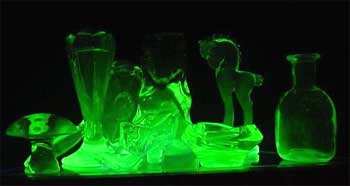

Manufacturers mostly used thoriated glass for the fastest, more expensive lenses, such as the f1.2s and f1.4s, but slower radioactive lenses also exist.Įventually, by the early 1980s, the thoriated glass fell out of use for consumer lenses – due to the factory workers’ health concerns and consumer radiophobia following nuclear accidents. Other manufacturers like Canon, Konica, Asahi Pentax, and others also used thorium in their lenses made between about 19. Kodak produced some of the first radioactive lenses for aerial surveillance – the Aero-Ektar.

In general, the glasses herein described are non-silicate and embody as the glassifier boric oxide in an amount between 35 and 40 per cent by weight lanthanum and thorium oxides in substantially equal amounts, greater than ten per cent, of each and barium oxide and either calcium or magnesium oxide. Specifically, this application relates to such glass having an index of refraction for the D line (n) in the range between 1.65 and 1.68 and an Abbe value (v) between 52.5 and 57.0. This application relates to glass having optical values in a range that is useful for the designing of optical instruments. De Paolis, from Eastman Kodak Company, filed a United States Patent 2,466,392 for Optical Glass, which introduced thorium and optical glass making properties. – Konica Hexanon Lens Guide, Konica Camera Company, 1972 History of radioactive lenses Selection of premium quantities of glass from the large glass pots, stringent spectrophotometric tests after stress and strain checks provide the valuable raw glass for ultimate use in lens elements. Lanthanum is only weakly radioactive because only 0.089% of it is lanthanum-138, a radioactive isotope and the remaining 99.9% is non-radioactive lanthanum-139.Įxotic elements such as Thorium, Lanthanum and Zirconium are added to glass mixtures to create the high refractive indexes necessary in sophisticated lens designs. These elements have distinct optical properties, allowing manufacturers to create lenses of superior quality.īoth lanthanum and thorium dioxide are radioactive, although radioactivity from lanthanum is so small that it is not detectable without sensitive lab equipment. Camera lenses contain optical glass made with various unusual elements like lead, boron, calcium, lanthanum, and thorium dioxide. Health Physics Poster from Oak Ridge National Laboratory (1947) What makes vintage lenses radioactive?
#Radium glass dangers how to#
I had so many questions: How to handle them? What damage could they do to me or the camera? Or maybe, I should give them away to a person from the forum offering to “ take them away from me” to save me from harm? (Nice try, buddy!)Īfter reading countless articles, studies and books, I have compiled the answers to most common questions. Like you, I wanted to be safe and understand how to deal with the radioactive lenses. After all, these lenses contain radioactive substances, and we should treat them with some care. The truth is somewhere between the two extremes and requires careful consideration.

You might also like to read a Fact Sheet on this topic or the response to another related question.There’s a lot of misinformation about radioactive lenses – from scare stories about growing an extra arm and getting cancer, all the way to saying that radioactive lenses are entirely harmless. The bottom line is that your cabinet and dishwasher are perfectly safe to use without concern for contamination with uranium. Thus atoms of materials in contact with radioactive dinnerware do not become radioactive. Transfer of that energy does not cause the nuclei of other atoms to become unstable. Uranium emits radiation energy because it has an unstable nucleus. Thus, there is no reason to expect any uranium to remain in the dishwasher.Ī related question that may also be of concern is whether contact with the radioactive Vaseline ® dinnerware could cause other materials to become radioactive. Again, the answer is NO. While some uranium might also be leached during dishwashing, it would be removed with the wash water. A 2001 study by the US Nuclear Regulatory Commission indicated that some uranium might be leached from the glass by acids that could result in very small radiation exposures to regular users of the glassware. Since it is part of the glass, the uranium cannot rub off by contact. The coloring agent in Vaseline ® glass is uranium which is mixed into the glass at the time of production. The answer is that NO residual radioactivity will remain in your cabinet or dishwasher. This is a good question that may concern other people with such glassware. You have raised a question about whether your cabinet or dishwasher could be contaminated from contact with radioactive Vaseline ® glass dinnerware.


 0 kommentar(er)
0 kommentar(er)
